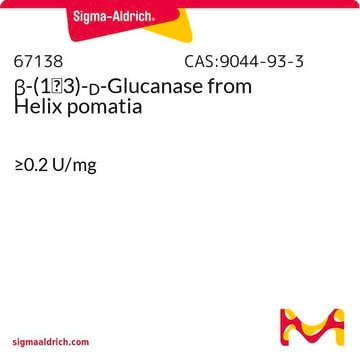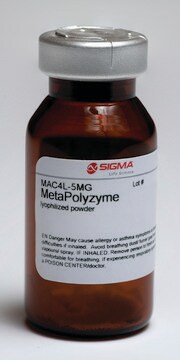L1412
Lysing Enzymes from Trichoderma harzianum
lyophilized powder
Synonym(s):
Glucanex®
About This Item
Recommended Products
form
lyophilized powder
specific activity
≥10 units/g
application(s)
diagnostic assay manufacturing
storage temp.
2-8°C
Application
Biochem/physiol Actions
Quality
Unit Definition
Legal Information
Storage Class Code
13 - Non Combustible Solids
WGK
WGK 3
Flash Point(F)
Not applicable
Flash Point(C)
Not applicable
Personal Protective Equipment
Choose from one of the most recent versions:
Already Own This Product?
Find documentation for the products that you have recently purchased in the Document Library.
Customers Also Viewed
Active Filters
Our team of scientists has experience in all areas of research including Life Science, Material Science, Chemical Synthesis, Chromatography, Analytical and many others.
Contact Technical Service







